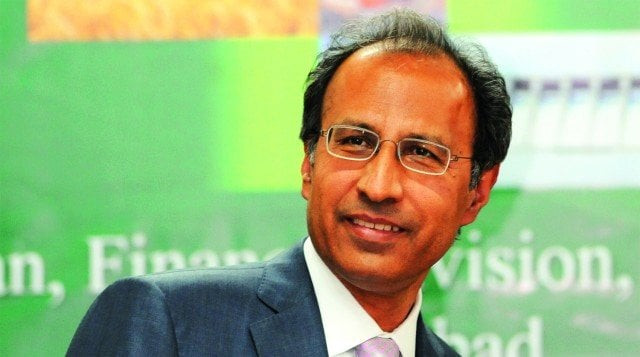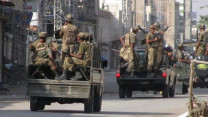IMF umbrella secures 4.1% growth

The economic gurus, including Adviser to the Prime Minister on Finance Dr Abdul Hafeez Sheikh, were speaking after unveiling the Economic Survey of Pakistan 2009-10.
However, they warned that the growth may be hampered next year by uncertainty over various fronts.
One of these factors was the energy crisis which, according to one official, pulled down economic growth by 2.5 per cent this fiscal year. It meant had there been no energy shortages, the economic growth would have been 6.6 per cent.
The other crucial factor was the war on terror, which the official said, cost Rs969 billion to the economy this year. The cost of the war on terror was over $11.5 billion, which was more than the IMF’s bailout package of $11.3 billion.
The survey projected 4.1 per cent GDP growth for fiscal year 2009-10, led by the industrial sector which grew by 4.9 per cent.
Hafeez Sheikh said the agriculture sector grew by two per cent and the services sector rose by 4.6 per cent. Per capita income stood at Rs87,810 or $1,051. “Austerity measures, consolidation of monetary and fiscal policies and more importantly the IMF programme gave confidence to investors and all these factors secured a 4.1 per cent economic growth,” said Sheikh in response to a question.
He admitted that during the past two years the economic performance had not been satisfactory as policies were taking time to deliver results. “Economic recovery is very fragile, as some of the areas were showing fragility and next year is going to be very critical,” warned the finance adviser.
Next year, he added, the government’s priority would be to protect the economic recovery and make it broad-based. There was a need for institutional arrangements to protect and stabilise agriculture growth and to give confidence and an element of predictability to industrial managers.
He said the fiscal year 2008-09 was perhaps the most difficult year for the economy as because of adjustments in response to the economic crisis the growth rate was very sluggish at 1.2 per cent.
Sakib Sherani, Principal Economic Adviser to the Ministry of Finance, said the government was cautiously optimistic about next year’s growth, as there were continuing challenges.
The cost of the ongoing war on terror dramatically increased this year and that would also continue next year. It also caused capital flight and resettlement cost increased significantly.
He said since 2005 the war on terror has cost the economy a whopping $43 billion or Rs3 trillion. Only this year, $11.5 billion were lost on this account, around $3 billion more than last year. “The surge was due to the expansion of the operation against militants,” said Sherani.
He said the other challenge was that the growth was not evenly distributed among regions as Khyber-Pakhtunkhwa and Balochistan suffered the most because of obvious reasons.
Sherani said that unemployment rate increased by 0.3 per cent to 5.5 per cent in 2008-09, adding the biggest challenge would be how to ensure that the “growth was not jobless”.
Other challenges were resolution of the energy and water crisis, timely arrival of external assistance and the outcome of the war on terror, he said.
Sherani said this year’s turnaround was because of a return to macroeconomic stability, flow of cash to rural economy, high remittances and downward revision to the growth rate of last year.
“Very large cash transfers due to crop procurements pumped about Rs219 billion into the rural economy. On top of that, $7.4 billion worth of remittances played a pivotal role in the economic growth,” he added.
However, an economist working with the finance ministry said the growth in major crops was 13.1 per cent and inflation was over 13 per cent, thus, the rural economy did not get more than the inflation and the real income remained stagnant.
Moreover, he said “remittances are not counted in the GDP rather they are included in the net factor income, which is part of the Gross National Product.”
Published in the Express Tribune, June 5th, 2010.



















COMMENTS
Comments are moderated and generally will be posted if they are on-topic and not abusive.
For more information, please see our Comments FAQ